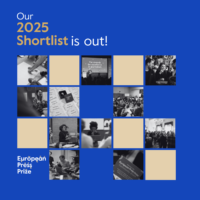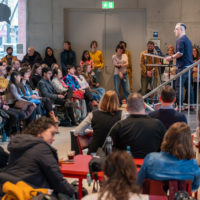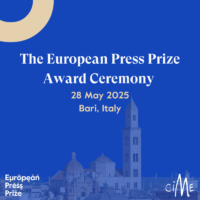The 20 behind the 20: our PrepCom’s take on journalism
Every year, in spring, the European Press Prize presents its shortlist: twenty projects, five per Prize’s category, that stand out among the hundreds of entries that were submitted. But behind the 20 professionals that will compose our shortlist, there are twenty others that are responsible for the selection of the submissions: we are talking about our Preparatory Committee.
Coming from different European countries and with different backgrounds (being journalists or communications experts, or activists) our PrepCom members bring together a variety of experiences, perspectives, and perceptions about journalism.
And while this year’s shortlist is being assembled, we asked them a simple, and yet intricate question. We hope their answers will be useful to spark a debate on what journalism is and that, through their words, young journalists can get inspired and understand better their profession.
A formula for excellent journalism
As they read and re-read hundreds of projects, there could be something our PrepCom members looked for, an ideal of excellence that they try to find in what they are reading. Therefore, we asked them: Is there a formula for excellent journalism? And if yes, what is it?
Of course, we know there is no ready-made way of producing an excellent piece, as PrepCom member Roman Anin underlined, arguing: “Otherwise, every story we write would become an ‘excellent journalistic piece’.” However, there might be some “ingredients” that, if used and combined well, can help craft a solid journalistic item.
Sérgio B. Gomes: “Writing down a “recipe” for a good piece of journalism is not easy, but it’s worth trying to identify some condiments to get there. For example, in reporting, the noblest and most difficult genre of journalism, it is necessary to feel that we are walking in the footsteps left by the reporter; we need to feel all our senses waking up — as if we were smelling the steam of a freshly cooked dish.”
Beata Balogová: “It is not enough to tell a good story. It must be inhabited by people who have faces and names. When they speak, the reader must instantly understand their words and see why it is important to listen to them. Their stories must grow larger than themselves, their families or the city they live in. Even strangers must feel that it concerns them. Yet everything must be authentic and true.”
The importance of talking about people and with people is an aspect that a lot of PrepCom members emphasize.
Katrin Kuntz: “When writing a feature story, take time for the people you meet, listen to them, relisten to them. Question your first thoughts and assumptions. Take the people around you seriously, no matter how different their world may be from yours. Show respect by knowing all necessary facts well. But then be genuinely interested in what you see and hear, and totally present. Make a connection if possible. Have trust in the story. Show patience and kindness. With your surroundings, with yourself, and your writing.”
Konstanty Gebert: “In reporting, you work with feet and tongue and hands. The hands will write the story down – but first your feet need to carry you everywhere you have to be to get the story out,” adding “People carry stories. If only you have the curiosity to ask and the patience to listen. Just don’t think of people as wrappers that contain the story. People are the story. And once you’ve walked enough, talked enough, and seen enough, you can try to go back, distill and crystalize.”
Oleg Khomenok: “An excellent journalistic piece is a cocktail of proven and verified facts, mixed with real people’s stories and experts’ comments and covering socially important problems or conflicts. It is enriched with good photos and graphics that make readers feel as if they were in the place the reporter is describing. This mixture attracts the readers’ attention from the beginning until the end of the story.”
Denis Džidić: “There are many different ways to make an amazing journalistic piece but, for me, a good recipe would be one taking special care with the opening paragraph, making sure it focuses on an individual, on someone the reader will relate to or be interested in; with the nut graph, which will explain to the reader why the topic of the article is important; and with the ending, which should leave your readers feeling they understand more about something than they did previously. But most importantly, it is important to write about something you care about and make sure the reader understands this topic makes a difference in the world.”
Mathias Friis: “An excellent journalistic piece is a story you cannot wait to share with colleagues, family, and friends. Often combining strong human-interest elements with in-depth reporting, the piece puts individual stories into a larger context and gives us a better understanding of the world. By shedding light on important questions or exposing wrongdoing in society, it promotes reflection, public discussion, and informed decision-making.”
Jacopo Ottaviani: “I believe an excellent journalistic piece combines the power of data analysis and data visualization with the human aspect of the story. This piece will explain a phenomenon starting locally, from a human level, and then use data to explain its magnitude on a macro level. The journalist will serve as a mediator between data and humanity and help the audience untangle the complexity of our societies.”
Lidy Nicolasen: “Apart from good and accessible language, there must be an actual motivation. But the most important ingredients of all are independent, reliable, and traceable sources and a transparent and intelligent point of view.”
Lucila Rodríguez-Alarcón: “Journalism is the art of accurate storytelling.”





